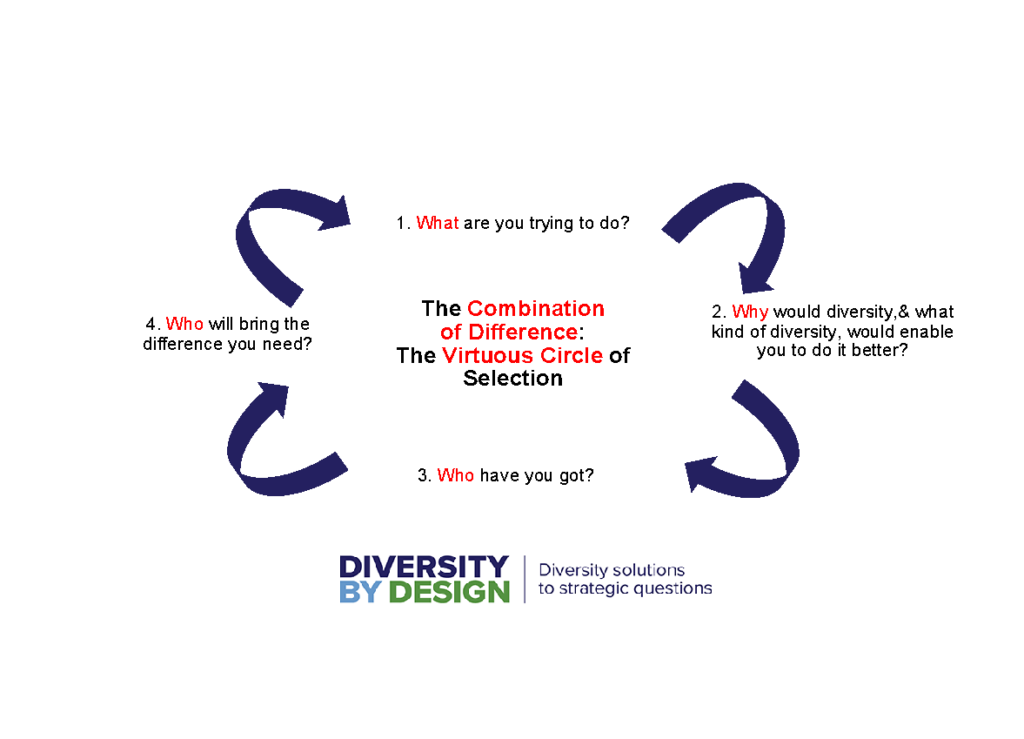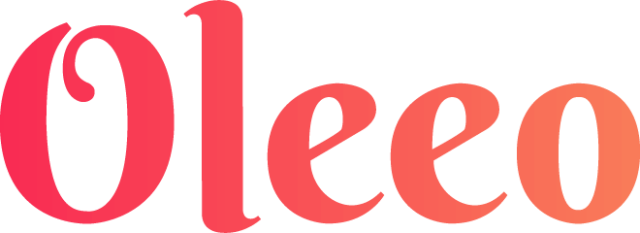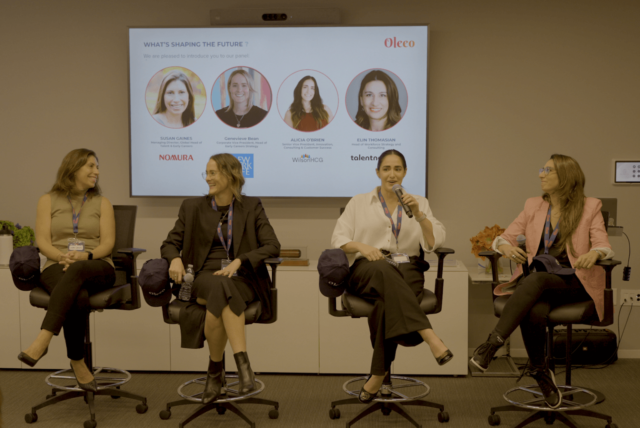New and Tested Approaches to De-Biasing Recruitment

A New Approach tested Across Sectors And Now Entering A New Phase To Automate It For Clients
There are many different factors which affect the diversity of staff such as:
- the historical pipeline of talent
- the language used to attract a wider range of applicants
- whether applicants feel confident they have the right skills for the role
- whether the applicant will be fairly considered should they apply
We’ll look at the last factor.
Data demonstrates that too often the range of applicants isn’t reflected in the shortlist and through the interview process.
Using research – much of it either the ground-breaking work in de-biasing originally carried out by Professor Iris Bohnet at Harvard Kennedy or a range of work in the area brought together and analysed by her team – and our experience with clients, we have developed, tested and refined our Recruiting for Difference (RfD) tool.
Through that research and testing with actual roles we have identified three key moments in the process where bias and our preferences have the most damaging impact on fairness and equity.
Crucial in the process is the initial diagnostic, which draws out in precise detail what is needed for the team you are recruiting into. This is the moment of challenge to each of us to question our assumptions about the role and explicitly recruit someone who brings something different to the team, rather than recruiting more of the same skill set and personalities.
Second is what best tests future performance-Iris’ work shows us that it is not past performance but response to real work scenarios. And thirdly we need to give ourselves the opportunity to assess the evidence from applicants in the most objective and fair way, by comparing skills and experience to our original job criteria.
For all those reasons we have been working with Oleeo to develop an automated version of this process, so that you can use it in any senior and middle management role with ease and efficiency. We – both Oleeo and Diversity by Design – are very keen to hear your response to what we are developing.
I have added some comments from senior execs across all sectors who have used RfD to give you an idea of what others have thought.
“I know from working with DbD on several recruitment exercises for executive and group selection exercises and programmes that I can very happily endorse their professionalism and explicit commitment to equality, equity and inclusion in all his work“- Deputy Chief Executive Officer of an NHS Trust
The de-biasing is achieved in the RfD process through three key differences from traditional recruitment:
1 THE DIAGNOSTIC
It starts with a diagnostic for the selection panel which guides them to create a set of criteria. Describing the role in the context of the specific challenges faced by the team that the successful candidate will join. This gives the space to consider exactly what they are looking for and what they value in a senior role at their trust. This makes recruitment of the right person relative to the goals of the team and to the existing members. It values personal experience alongside technical qualifications. It builds teams with the appropriate difference to achieve the complex goals facing NHS Trusts. This de-biases the process by enabling the Selection Panel to challenge what they traditionally value in NHS leaders and therefore helps to widen the pipeline of appointable candidates.
“We wanted to work with Diversity by Design as because their approach is a fresh way of looking at specific aspects of the EDI, especially when deciding how to attract and recruit a diverse workforce into our organisation. Working with them we were able to question the content and purpose of the role to determine the fundamentals for the job and think about exactly what skills and behaviours would be required. The approach is thought-provoking and at the same time practical and innovative. It enables different thinking and outcomes.”- A Deputy Director of Workforce and Organisational Development
The process recruits for difference using this virtuous circle:

2 REAL-WORK SCENARIOS
Having agreed the criteria, the selection panel is asked to create real-work scenarios that will test the candidates’ ability to meet the criteria. Real-work scenarios are the best predictor of future performance – rather than CVs, length of service, qualifications etc…
(Bohnet, I (2016) What Works, Harvard University Press, Harvard, USA, p 138)
- These scenarios then make up the application form.
- The selection panel will agree on the metrics which they will use to score the candidates’ responses.
- The Panel agrees a framework which will bring rigour and consistency to the assessment of candidates.
- The candidates write their responses to the scenarios.
- CV’s are set aside and only used in assessment and selection for due diligence
This de-biases the process by giving candidates an explicit steer on what the panel is looking for and enables them to show what they can offer to the role in the best possible way.
“Diversity by Design helped us to approach our recruitment with a very different mindset. It helped us to focus on the skills and experiences that would make the biggest difference. We attracted fresh talent and made some great appointments.”– A Director for Strategy & People
3 JOINT SELECTION
The candidates’ responses are delivered to the selection panel in an original way to avoid the ‘halo effect’ (or its negative cousin, the ‘eclipse’).
Glossary
The Halo Effect- A positive first impression which affects how you think and feel about someone, often more favourably.
The Eclipse- A negative first impression which affects how you think and feel about someone, often less favourably.
The panel receives every candidate’s response to the first scenario, then every candidate’s response to the second and so on. In addition to this ‘chunking’ of the responses, the order will be randomised.
This de-biases the process in two ways:
- It enables the selection panel to avoid making the kind of preferential assessments we all make, faced with the ‘whole person’
- It enables each candidate’s responses to be clearly assessed against the metrics on which the Panel agreed and also against the other candidate’s responses. This assessment creates the shortlist.
Joint selection de-biases the process by enabling the panel to focus solely on the evidence. Preventing, despite our own personal efforts to do so, extraneous personal preferences influencing the choice of shortlist and the eventual successful candidate.
Removing bias from your recruitment process won’t actually require any extra time or effort. At Oleeo, we provide applicant tracking systems with diversity tools built in as standard. Or if you’re already using an ATS, we also offer tools that can be used in conjunction with your current systems. With our technology you have the ability to remove bias from every stage of the Recruitment Funnel.
Find out more about how Oleeo can help you recruit more diversely.
Simon Fanshawe, Co-founder and CEO of Diversity by Design
Diversity by Design provides Diversity Framework, a Recruiting for Difference tool and insights which help organisations understand their own workforce. Diversity by Design works with organisations to use diversity as a catalyst for positive change by helping them to plan their workforce and strategy with diversity at the forefront. Their aim is to combine the right combination of identities, personalities and skill sets to achieve organisational goals.



